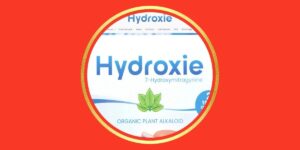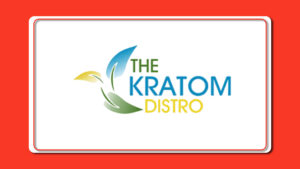The opioid withdrawal process provides difficulty and mental exhaustion to those affected by opioid dependency. The withdrawal process from opioids represents both physical and emotional burdens when people withdraw from prescription medicine or illegal substances.
People who experience this problematic journey must grasp both opioid withdrawal symptoms as well as options for treatment.
In this blog, we’ll explore opioid withdrawal symptoms before discussing possible remedies, including the use for withdrawal management and its FDA and opioid association details.
What is an opioid?
Your doctor provides you with strong medications that belong to the opioid class to treat your pain.
Physicians provide opioids when treating short-term severe pain conditions that start after surgical procedures or injuries. These drugs enable pain management for people who are experiencing cancer and terminal illness conditions.
What Are Opioid Withdrawal Symptoms?
Being regularly prescribed opioids will result in opioid withdrawal when a person experiences sudden opioid reduction or becomes completely opioid-free.
After adapting to the presence, your body will produce various physical symptoms coupled with psychological reactions.
Symptoms express themselves differently depending on opioid substance type combinations and length of exposure, with personal medical health conditions.
1. Common Opioid Withdrawal Symptoms
- Physical Symptoms
- Muscle aches and pains
- Nausea and vomiting
- Diarrhea
- Sweat and chills
- Runny nose and teary eyes
- Rapid heartbeat
- High blood pressure
- Abdominal cramping
2. Psychological Symptoms
- Anxiety and agitation
- Insomnia
- Depression
- Irritability
- Difficulty concentrating
- Intense cravings for opioids
3. Severe Symptoms
In rare cases, opioid withdrawal can lead to more severe complications, such as dehydration from vomiting and diarrhea or exacerbation of pre-existing health conditions.
The withdrawal symptoms from opioids are generally not fatal, yet they produce overwhelming discomfort to the affected individual.
Why should I try to come off my opioid medicine?
You will experience decreased pain relief from your opioid pain medicine and increased risks while taking these drugs if you have persistent (chronic) pain that is not cancer-related.
Seek medical consultation regarding opioid withdrawal from your physician.
Taking opioids can lead to:
- Many side effects include nausea alongside constipation and extreme drowsiness.
- The development of tolerance makes it necessary to use larger opioid doses because they become less effective.
- People who take medications experience dependence as a buildup of symptoms when they discontinue their medication use.
- Life-threatening breathing problems
- Higher pain intensity develops because your brain sensitizes to pain signals
As your dose of opioid medicine increases, so does the risk of harmful side effects.
- About 4 in 5 people with chronic non-cancer pain who take opioids long term will experience at least one harmful side effect.
Who is most likely to experience opioid withdrawal symptoms?
You are more likely to have opioid withdrawal symptoms if:
- You are taking a high dose
- You’ve been taking opioids for more than 6 months
- You reduce your dose too quickly
Symptoms of opioid withdrawal can develop when someone takes opioids daily for one month.
The proper use of doctor-prescribed opioid medications does not protect you from dependency issues. Withdrawal symptoms will manifest if you abruptly stop using the medication.
Taking an opioid medicine now and then or for a short time will not generally lead to withdrawal symptoms.
The Timeline of Opioid Withdrawal
Your experience of opioid withdrawal depends on the type and dosage of opioid you take and the extent of your opioid use duration.
The combination of using fast-acting opioids like oxycodone or the illegal drug heroin will lead your body to experience withdrawal symptoms 6 to 12 hours after your last dosage.
The withdrawal symptoms reach their peak intensity within 2 days of stopping opioid use, before they begin to improve during the following week.
People who consume opioids that enter their body at a slower rate will display withdrawal signs one to two days after finishing their medication.
Slow-release opioids cause milder symptoms than fast-acting ones, which normally persist between three and six weeks.
How can I prevent opioid withdrawal symptoms?
Different approaches exist for managing withdrawal symptoms to improve your general feeling of well-being. Medical supervision helps people prevent withdrawal symptoms through the systematic reduction of their medication amounts.
This process is called tapering. You will develop a step-by-step approach for dosage reduction with your doctor, either daily or weekly.
The treatment plan depends on multiple factors, including the speed at which you need opioid discontinuation and the amount of time you have been taking these drugs.
Patients may receive additional medications from their doctor to treat withdrawal symptoms that arise during opioid reduction.
How can I manage opioid withdrawal symptoms?
With the assistance of your physician, you should taper medication doses because this method yields the most successful approach to circumvent unpleasant withdrawal symptoms.
The symptoms will be short-term yet harmless for most people who experience them. Medical professionals can support patients through their opioid withdrawal symptoms.
Strategies to manage opioid withdrawal:
- A sufficient water intake will help prevent dehydration from occurring. The combination of opioid withdrawal symptoms becomes stronger when you start sweating or feel nauseous, or need to vomit.
- The combination of mental and physical therapy methods, including yoga, relaxation practices, and mindfulness exercises, helps you control withdrawal-related pain.
- People must request help when dealing with challenges. Tell your family members as well as your friends that you require additional support throughout your opioid withdrawal period.
- Consult with your doctor about available treatments and methods to handle withdrawal symptoms.
Your fear of withdrawal should not stop you from either lowering your opioid amount or fully quitting them.
Ask your physician for guidance on lowering your dose slowly, since this method improves the overall process.
Medicines used to manage opioid withdrawal
Certain medications provide a method to handle opioid withdrawal symptoms, which enhances the withdrawal experience. These include:
- Clonidine: To treat symptoms such as sweating, irritability, fast heartbeat, and high blood pressure
- Diazepam: To reduce feelings of irritability and anxiety
- Metoclopramide: To help you manage nausea or vomiting
- Pain-relief medicines: Such as paracetamol or ibuprofen, to relieve headaches, muscle pain, and joint pain
- Loperamide: To stop or reduce diarrhoea
When medical professionals prescribe opioids known as methadone and buprenorphine, they serve as substitute medications for high-risk opioids.
Long-term administration of these prescribed opioids aims to manage your symptoms for success in opioid discontinuation as treatment ends.
Kratom and Opioid Withdrawal: What You Need to Know
During recent years, the tropical Asian plant Kratom has been studied as an alternative to treat opioid withdrawal symptoms.
Public debate continues to surround its utilization, even though everyone needs to know the facts before selecting this option as a solution.
Is Kratom an Opioid?
The active compounds found in Kratom activate opioid receptors within the brain through their presence of mitragynine and 7-hydroxymitragynine chemicals.
Some users take kratom because it works similarly to opioids in the brain, even though the Drug Enforcement Agency does not consider kratom an opioid substance.
The FDA has introduced safety concerns that extend to the possibility of kratom abuse.
Potential Benefits and Risks of Kratom
According to kratom supporters, the substance helps people undergoing opioid withdrawal because it minimizes symptoms and decreases their cravings.
Kratom presents serious dangers because it lacks both regulatory oversight and proper dosage guidelines.
The usage of kratom may create an addictive relationship that could result in additional addiction patterns between users.
You must seek medical advice from an expert before attempting kratom treatment for opioid withdrawal because they can help evaluate the possible advantages versus disadvantages.
Long-Term Solutions for Opioid Dependence
Long-term opioid dependence recovery requires sustained healthcare resources and professional help to maintain good health after withdrawing from opioid usage. Here are some strategies to consider:
1. Medication-Assisted Treatment (MAT)
MAT combines FDA-approved medications like methadone, buprenorphine, or naltrexone with behavioral therapy to address both the physical and psychological aspects of addiction.
This approach has been shown to improve outcomes and reduce the risk of relapse.
2. Support Groups and Peer Counseling
Meeting with people who share your experiences allows you to receive meaningful psychological backing along with motivational force.
SMART Recovery programs create organized settings where members can both exchange recovery narratives and develop important problem-solving competencies.
3. Lifestyle Changes
Adopting a healthy lifestyle, including regular exercise, a balanced diet, and stress management techniques, can support overall well-being and reduce the risk of relapse.
4. Ongoing Medical Care
People should visit their healthcare provider frequently to monitor their progress alongside symptom management and lifelong sobriety guidance.
The Importance of Seeking Professional Help
Professionals must handle opioid withdrawal since the process involves various complex components.
People trying to stop using opioids without medical supervision face dangerous health risks that raise the chances of returning to drug use.
The first necessary step toward recovery starts with consulting either a medical specialist or an addiction specialist if you or someone you love faces opioid dependence.
Final Thoughts
Withdrawal from opioids presents itself as a challenging process that people can effectively manage through proper support services and resources.
People who understand withdrawal symptoms alongside recovery solutions will gain more control over their journey toward recovery.
Medical professionals, along with evidence-based treatments, stand as the most important approach over alternative options such as kratom because they promise both safety and maximum effectiveness.
Possible recovery exists through the correct tools combined with support services that allow people to defeat opioid dependence and restore their lives to health.
The first step to obtaining a brighter, healthier future demands immediate help from healthcare providers for anyone going through opioid withdrawal symptoms or for people you care about.
More Readings:

































